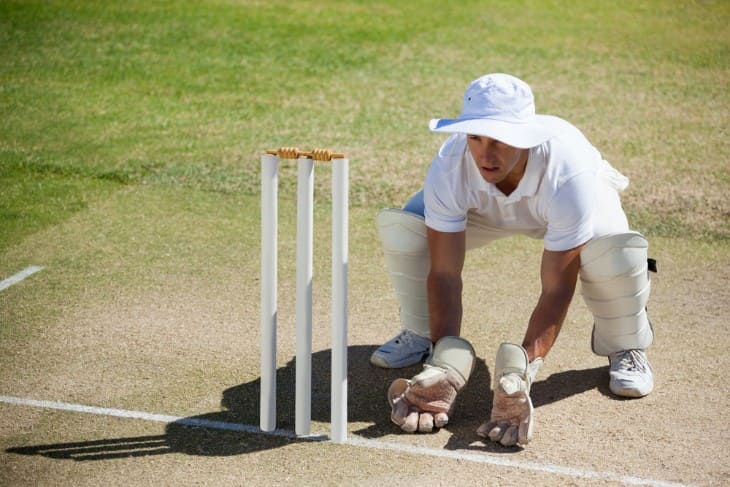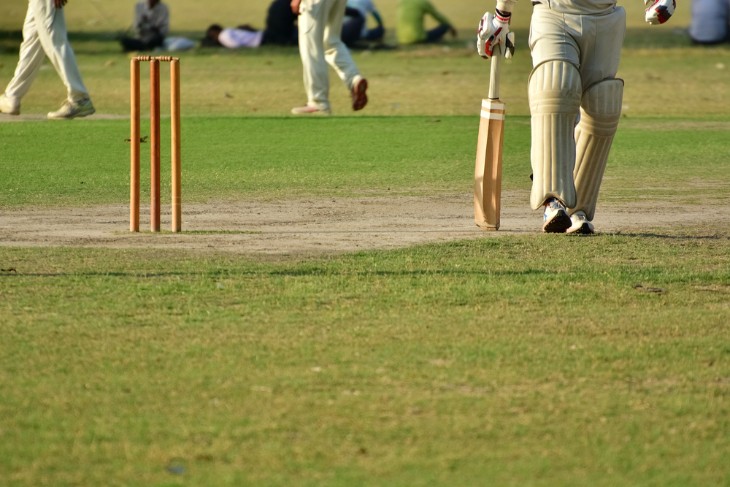- The Century: A Benchmark of Batting Excellence in Cricket
- Historical Context: The Evolution of the Century in Cricket
- Famous Centuries and Their Impact on the Game
- The Psychological Aspect of Scoring a Century
- The Role of Centuries in Different Formats of Cricket
- Centuries and Their Contribution to Team Success
- The Influence of Fielding and Bowling on Achieving Centuries
- Comparative Analysis: Centuries in Different Eras of Cricket
- In a Nutshell
Cricket is a well-loved sport worldwide not only because it combines tactics and skill but also because it can praise individual accomplishments in a team's context. Of these, one of the most sought-after and revered is scoring 100 runs in an innings as a batsman. Such an achievement that has fascinated cricket fans and players alike throughout its history is known as "century."
“This epic milestone epitomises skill, resilience, grit and sagacity.” That’s what this piece shall venture to delve into; and also why it remains the benchmark for batting greatness in cricket.
The Century: A Benchmark of Batting Excellence in Cricket
When someone scores a century in cricket it is a big deal. It means the batsman made 100 or more runs without losing his wicket. The batsman needs skills on how to play fastballs, think fast and be mentally strong. Hitting hard balls is not all there is.
The hard part for any batsman comes when they decide whether to attack or defend themselves against their opponents. For them to better understand who is bowling and what kind of delivery on which pitch they are playing, good batsmen will take enough time to learn this first-hand by experiencing each ball at least once during their innings. One must therefore know how long he should take before increasing either his slow or fast pace so that he may not go so far away from where he wants to score.
A century means you're playing in top form as a batter; as such your team finds it hard to lose with you around. A century signifies that one is a top player who changes games for his teammates with ease; it's something any accomplished cricketer would be proud of no matter his age. And even if they aren't fortunate enough to witness every minute live, just about every human being who respects himself loves watching centuries achieved by other people.
But not just any old run-scoring innings amounts to a century. A good hundred could be made up of all sorts of shots – drives, cuts, pulls and so forth. It may be fast and dramatic or slow and patient. The right shot at the right time is what matters most. Every century is different; that’s why every century is special.
Also, a hundred can turn a game around. It can make a losing side win the match. Also, it can help the team put up a respectable total or chase down one that looks out of reach. However, it also has those critical moments in matches that determine who will emerge as victors.
Scoring 100 runs in cricket is considered an achievement. When you score 100 runs in cricket, it means that you are now this great batsman; an exhilarating moment for fans too! Something that players strive for while spectators like watching it happen occasionally; that’s what makes this game more exciting!
Historical Context: The Evolution of the Century in Cricket
The century in cricket has a long history. In the early days of cricket, scoring 100 runs was very hard. Pitches were not as good as they are now, and the bats used were not as advanced. This made getting a century a rare and amazing thing. As cricket grew, pitches got better, and batsmen started to play more aggressively. This meant more centuries were scored, but they never lost their special meaning. A century has always been a big deal in cricket.
Cricket has evolved a lot over time. The new rules, the different types of pitches and improved bats and balls have all contributed to this change. These changes have made it easier to score runs but they have also made bowlers better. This is why getting a century is still a huge challenge since it needs great skill, patience and in-depth knowledge of how the game is played.
There is now a different way people think about centuries. In the past, centuries were all about waiting around and playing safe cricket. Nowadays, however, it can be about playing quickly as well as taking risks. Thus, cricket becomes more thrilling due to various ways in which centuries may be approached by players scores become distinctively diverse within such given aspect; some being slow-paced whereas others are quite fast.
It has moved from being something that rarely happens to something that often does but this does not mean that it should be taken for granted. Although the way centuries are scored has changed over time they remain an important part of any cricket match even today; this reflects one's ability as a batsman since these moments mostly define most matches.
Famous Centuries and Their Impact on the Game
- Don Bradman’s 334 at Headingley in 1930: One of the greatest cricketers ever Don Bradman made an enormous score of 334 against England. It was remarkable because of its magnitude and Bradman's batting style during that innings, he portrayed finesse with the bat as he showed wide-range shots throughout his knock while remaining in control too; what can simply be referred to as one among the best innings of all time concerning textbooks which highlight how single-player dominance changes results in cricket games.
- Brian Lara’s 400 Not Out Against England in 2004: Brian Lara set a world record by scoring 400 runs without losing his wicket once again it required a lot of stamina apart from his skills on the pitch as this was another mammoth effort. Lara batted for a long time, facing many different bowlers. He played shots all around the ground and never looked in trouble. It was not just about runs but it showcased what cricket could be.
- Sachin Tendulkar’s 200 Against South Africa in 2010: Sachin Tendulkar became the first player to score a double century in a One Day International match which marked an important moment in cricket’s history as well; big scores were possible even in shorter versions of ODIs-odis containing his innings saw him play some astonishing shots that kept up momentum throughout since it changed how people thought about batting in One Day Internationals.

The Psychological Aspect of Scoring a Century
Scoring a century does not only involve having good form in playing cricket; there is also a need to have a strong mind for one to achieve this feat. Batting for long periods, handling pressure and staying focused are part of the process of reaching 100 runs. The last few runs before a century, known as the "nervous nineties," are especially hard. Pressure affects many batsmen who get out at ninety-nine because they cannot handle it anymore; however, those who manage to overcome this hurdle go ahead to score centuries which shows how mentally tough they are.
Being in the nineties is difficult. A batsman would start thinking too much about getting hundreds thus eventually changing their game by either being overprotective or taking too many chances which leads them into making mistakes and being caught off guard by any bowler. Thus, remaining calm and focused is what tests players when they reach their nineties mark.
Another hundred also brings with it various challenges. A century can be due to a change of weather, a different kind of bowler or a tough pitch. In dealing with these variables, however, batsmen are still required to make runs off the bat as well as adapt themselves accordingly.
There is nothing like a century in this game. A hundred in cricket is an uplift to the team's batting and may cause jitters among the bowling side too. Hence, scoring a ton is good not only for the batsman but for his team as well because it can be that thin line between winning and losing.
In conclusion, making 100 runs is not just about playing shots. It means having willpower and coping against pressure as well as making the right choices. This task is daunting; nonetheless, when accomplished it becomes very rewarding. It marks both a top-order player and an important match event.
The Role of Centuries in Different Formats of Cricket
- Test Cricket: In Test cricket, centuries are seen as the highest standard of batting. This format, which can last up to five days, tests a player's skill, patience, and ability to adapt. A century in Test cricket shows a batsman can face different bowlers and conditions over a long time. It's about playing carefully and building an innings. Centuries in Test cricket are often key to setting up a big total or saving a match.
- One Day International (ODI) Cricket: In ODIs, a century is a big achievement because of the limited number of overs. Each team only gets 50 overs, so a batsman has to score quickly. A century in an ODI shows a player can score fast and keep going under pressure. It can help set a high target or chase down a tough score. Centuries in ODIs are often more aggressive than in Test cricket.
- Twenty20 (T20) Cricket: In T20 cricket, centuries are rare and very special. This format is very fast, with each team batting for just 20 overs. A century in a T20 game shows amazing hitting and the ability to score from almost every ball. It can change a game quickly and put the other team under a lot of pressure. T20 centuries are about power and skill in hitting the ball.
Centuries and Their Contribution to Team Success
- Setting Up Big Totals: A century can help a team set a big total for the other team to chase. This puts the other team under pressure and can make it hard for them to win. A big score from one player can also help the other batsmen play more freely. They can take fewer risks and build a good total.
- Chasing Down Scores: When chasing a score, a century can be key to winning. It keeps the run rate up and takes pressure off the other batsmen. A good century can turn a tough chase into a winnable one. It shows that even high scores can be chased down.
- Boosting Team Morale: A century can lift a team's spirits and give them confidence. It shows that they have players who can change a game. This can be a big boost, especially in tough situations. A good inning from one player can inspire the whole team to do well.

The Influence of Fielding and Bowling on Achieving Centuries
Getting a century in cricket is not just about good batting. It also depends on how well the other team bowls and fields. Good bowling can make it hard for a batsman to score runs. Bowlers try to find the right line and length to trouble the batsman. They use different skills like swing, spin, and pace to get the batsman out or stop them from scoring easily. This makes a century a real test of a batsman's ability.
Fielding also plays a big part in stopping centuries. A team that fields well can stop lots of runs. They can catch the ball when it's hit in the air or stop it from reaching the boundary. Good fielding puts pressure on the batsman. It can force them to take risks, which can lead to them getting out. This means that fielding can be as important as bowling in stopping a batsman from getting a century.
The battle between the batsman and the bowlers and fielders is a key part of cricket. It's what makes the game exciting and challenging. A batsman has to be smart and skilled to score a century against good bowling and fielding. They have to read the game well and adapt to what the other team is doing.
Getting a century is not just about hitting the ball well. It's also about dealing with what the other team does. Good bowling and fielding can make it very hard to score a century. This is why a century is such a big achievement. It shows that a batsman can do well against the best bowling and fielding. It's a real sign of a great player.
Comparative Analysis: Centuries in Different Eras of Cricket
- Early Era of Cricket: In the early days of cricket, centuries were rare. The pitches were often rough and hard to bat on. The equipment, like bats and balls, was not as good as it is now. This made batting a real challenge. Batsmen had to be very careful and patient. Centuries in this era were about skill and staying in for a long time. They were a big achievement because of how hard batting was.
- Middle Era of Cricket: As cricket developed, pitches got better and bats improved. This made batting easier, and more centuries were scored. But bowlers also got better. They learned new ways to get batsmen out, like swing and spin bowling. This meant that even though batting was easier, centuries were still a big challenge. Batsmen had to adapt to these new bowling styles to score centuries.
- Modern Era of Cricket: In modern cricket, centuries have become more common. But they are still a big deal. The game is faster now, and batsmen are more aggressive. They take more risks to score runs quickly. This makes centuries in the modern era different. They are often about hitting big shots and scoring fast. But they still need skill and good judgment.
In a Nutshell
In conclusion, the century in cricket is more than just a number. It's a symbol of batting excellence, a milestone that combines skill, mental strength, and a deep understanding of the game. Whether in the long format of Test cricket or the fast-paced world of limited-overs cricket, centuries are celebrated as significant achievements.
They contribute to the team's success, elevate the individual player, and enrich the game's history. As cricket continues to evolve, the century remains a coveted goal for batsmen, a benchmark of excellence, and a thrilling highlight for fans around the world.


